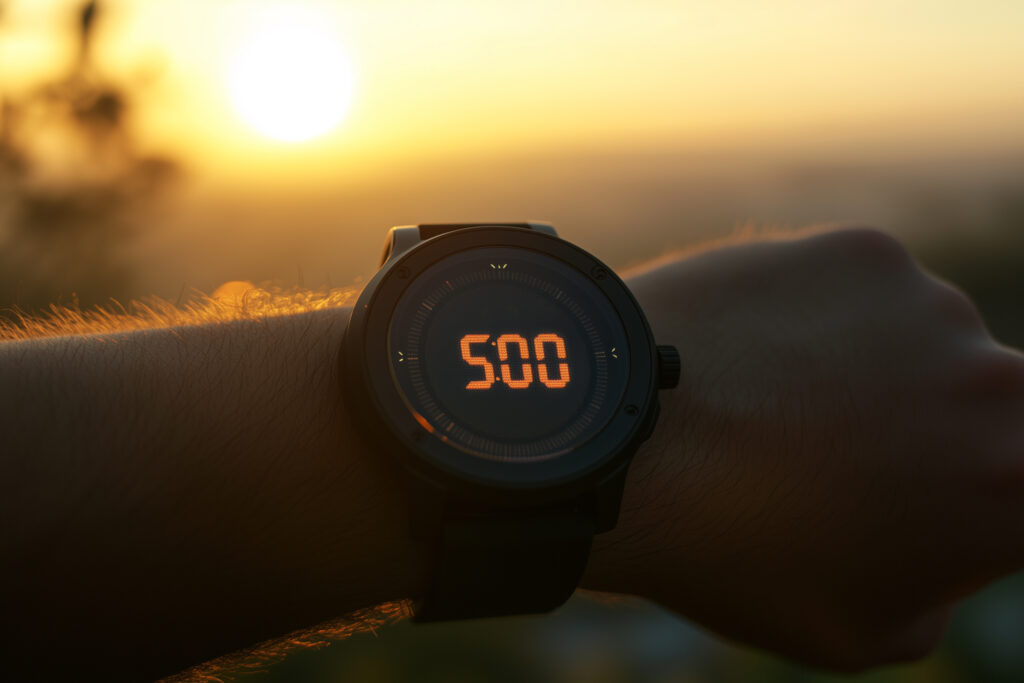
Tips for Maximizing Your Day According to Your Chronotype
Your chronotype can affect when you’re tired and productive. Scheduling your day with your chronotype in mind can help you maximize your time.

Chronotypes have evolved to represent not only the hours when we’re sleepy but also when we can reach peak productivity. They differ from person to person, making them the key to maximizing your day—when you know your hours of greatest productivity, you’ll better be able to tackle your to-do list.
Typical work schedules can make it hard to adhere to your chronotype, but adaptations can be made to help you see the greatest benefit.
What is a Chronotype?
A chronotype refers to the category that you fit into based on your body’s preferred sleep and productivity times. It can influence when you’re hungry, tired, or when your peak exercise time is.
Your chronotype is closely related to your circadian rhythm because of this connection with sleep and wake times. Some researchers even theorize that chronotypes developed to aid hunter-gatherers as they allowed people to rotate who was on guard during the night since the time that sleepiness sets in varies by chronotype. In this way, it was likely a critical survival technique, but now, it’s less important for survival and more important for feeling your best.
When you understand your chronotype and the hours when you’re most likely to feel tired and productive, you can plan your day for maximum efficiency.
The Types of Chronotypes
While many different chronotypes distinctions exist, the Morningness-Eveningness Questionnaire is a tool often used by psychologists to categorize individuals into one of three chronotypes: morning larks, hummingbirds, and night owls. The hours of sleep and productivity for each group are modeled after their namesake animal.
If you’re ever unsure of your chronotype, consider looking at your parents or siblings—evidence suggests that chronotypes can have a strong genetic background, so if your parents are “morning larks,” you may be as well.
The three chronotypes have the following distinctions:
Morning Larks: Early to rise, early to bed
- Wake Up: 5 – 6 A.M.
- Greatest Productivity: 9 A.M. – 12 P.M.
- Bedtime: 9 – 10 P.M.
Night Owls: Nighttime favorers
- Wake Up: 10A.M.
- Greatest Productivity: 2 P.M. – 6 P.M.
- Bedtime: 3 A.M.
Hummingbirds: The In-Between
- Wake Up: 6:30 – 9 A.M.
- Greatest Productivity: 10 A.M. – 2 P.M.
- Bedtime: 10:00 P.M. – 12 A.M.
How to Maximize Your Day Using Your Chronotype
Since chronotypes have a genetic link, it can be very difficult to change your chronotype. While they change during life—with children often following an earlier chronotype and teenagers having a later one—these are natural changes that happen during life as sleep needs change, not a result of conscious change.
Knowing that your chronotype is unlikely to change, it is important to instead use your chronotype to your advantage in order to maximize your day. For instance, if you know when you’re most likely to be productive, you can plan your big tasks during that time frame and easier tasks outside of your time of greatest productivity. By planning your day in this way, you work with your body’s natural rhythm, not against it.
Here are some tips to maximize your day based on your chronotype:
- Figure out your chronotype. First and foremost, take the time to figure out your chronotype. Take note of when you typically fall asleep and wake up, along with the hours when you find yourself to be most productive. Using this information, categorize yourself into one of the three chronotype categories.
- Schedule your hardest tasks at peak productivity time. Each of the chronotypes has a range of hours when your productivity tends to be its greatest. To work with your body and not against it, schedule your most complex and demanding tasks during these hours. Otherwise, you may find yourself spending even longer to complete them.
- Save the easier tasks for outside of peak hours. For many chronotypes, the peak hours do not extend for a complete workday. In these cases, plan to complete easier tasks that don’t require as much brain power during the off-peak hours. This way, you still tackle your to-do list but maximize your peak productivity for the tasks that really need extra attention.
- Schedule analytical and creative tasks. You can also schedule your day based on the tasks you need to complete. Generally, analytical tasks are best completed during your hours of peak productivity, while those that require more creativity can thrive when your energy and attention start to wane. Some even suspect that the reason why you can be more creative during this time is because the distractions allow you to make connections that you may not have otherwise made.
You can maximize your day in order to be productive all day long; you just need to be strategic in your schedule. So, when you sit down in the morning, block out your tasks for the day based on your productivity peaks and troughs to make the most of your workday and not feel like you’re slogging through.
How To Manage a Schedule Out of Sync with Your Chronotype
While an ideal world would allow everyone to modify their schedule based on their chronotype, that isn’t always possible. Take those with the night owl chronotype; they often have to forego their preferred wake-up time in order to be ready in time for school or work.
When you have to go against your chronotype, supporting your circadian rhythm can go a long way in making the days more manageable. For instance, getting sunlight first thing in the morning can help you wake up, or turning off electronics, dimming the lights, and taking a melatonin supplement to help you go to bed earlier than your body naturally desires.
Additionally, try completing your tasks at an alternative time. For instance, if you prefer to sleep in but need to get to work early, consider preparing for the next day as much as you can the night before so that you can sleep in a bit. This way, you can align yourself, even infinitesimally, more with your chronotype.
When you accept your chronotype (rather than try to fit the standard “early-riser” aspiration), you’ll see your productivity and happiness improve, making this an easy way to maximize both your day and your life.
FAQ
Is it possible to gradually shift your chronotype?
While chronotypes are largely genetic, they can be slightly adjusted over time through consistent sleep habits, exposure to natural light at strategic times, and behavioral changes. However, attempting to drastically change your chronotype (e.g., forcing a night owl to wake up at 5 A.M.) is often unsustainable and can lead to chronic fatigue.
How do chronotypes change with age?
Chronotypes naturally shift throughout life. Children tend to be early risers, teenagers and young adults often lean toward night owl tendencies, and older adults usually revert to earlier sleep-wake patterns. These changes are influenced by hormonal shifts and alterations in circadian rhythms over time.
Can you have traits from multiple chronotypes?
Yes! While most people fit predominantly into one chronotype, some individuals may exhibit traits from multiple types. Factors like lifestyle, sleep hygiene, and environmental influences can create variations in how a person experiences their natural productivity and sleep-wake cycle.
Do chronotypes influence more than just sleep and productivity?
Yes! Chronotypes also affect metabolism, hunger patterns, social energy, and even athletic performance. Understanding your natural rhythm can help you optimize meal timing, exercise routines, and social interactions for better overall well-being.
Do different chronotypes dream differently?
While research is limited, some studies suggest that night owls experience more vivid and intense dreams due to fragmented sleep. Morning larks, on the other hand, may have shorter but more structured dream cycles due to their earlier bedtimes.

Written by
Jessica G
Medical writer freelancer who has written hundreds of articles on varying topics. Masters of Engineering degree in Biomedical Engineering.
Download Pillow
Get help
Press & News
Legal
Connect
X (Twitter)
Company
Copyright © Neybox Digital Ltd.


